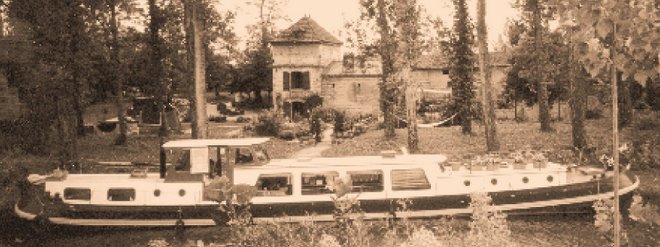 I am not going to brag, much, but Sue Kelley and I grew these sweet Tarbais beans this summer in the much maligned potager at Camont. We got just enough of a harvest for perhaps two medium size cassoulets, one for now to share with you all, and one for later this winter when the Garonne River Valley damp has seeped into every pore of the stone walls.
I am not going to brag, much, but Sue Kelley and I grew these sweet Tarbais beans this summer in the much maligned potager at Camont. We got just enough of a harvest for perhaps two medium size cassoulets, one for now to share with you all, and one for later this winter when the Garonne River Valley damp has seeped into every pore of the stone walls. We caught these beans as they were drying on the vine twisting around the hazelnut stakes we tepee-d together. After a morning of weeding and starting to put the garden to bed, we sat and shucked. Beans freshly picked like this and before they are dry enough for storing can be popped into a freezer for no-soak cooking later. Tarbais grow as pole beans and traditionally were planted at the base of corn. Think of a Gascon 'three sisters'- corn, beans and French pumpkins. This was a test harvest and it seems that beans take to the heavy clay river bottom soil of this Potager, so spring '08 we'll plant a bumper crop of cassoulet-style beans.
We caught these beans as they were drying on the vine twisting around the hazelnut stakes we tepee-d together. After a morning of weeding and starting to put the garden to bed, we sat and shucked. Beans freshly picked like this and before they are dry enough for storing can be popped into a freezer for no-soak cooking later. Tarbais grow as pole beans and traditionally were planted at the base of corn. Think of a Gascon 'three sisters'- corn, beans and French pumpkins. This was a test harvest and it seems that beans take to the heavy clay river bottom soil of this Potager, so spring '08 we'll plant a bumper crop of cassoulet-style beans. 



Choose your bean for texture- creamy, thin skin and flavorful, and size- and they should be large enough to stand up to bites of sausage or chunks of duck. Buy fresh in season or dried from good sources; an eight year old bean doesn't taste like much. And don't get lost in how strange, complicated and time consuming a cassoulet sounds. Learn to cook your beans well and the rest will fall in place. Ste. Paula (Wolfert) gives a fine account of tracking down THE Cassoulet in her essential "The Cooking of Southwest France". Having had the pleasure of eating in Daguin's kitchen for many years, her description of the famous Fava bean cassoulet made me smile remembering those meaty fresh favas, peeled and stewed with nutty duck confit. A thoroughly Gascon solution to winning any cassoulet concours hands down.
So choose your beans wisely.







4 comments:
Nice post--I asked my sister to ship me Tarbais beans from Paris for my cassoulet a few years ago. I couldn't source any locally. It turned out a bit too liquid, but good anyway. Need to try your recipe this winter...
Ian
Haricots Tarbais for 9 euros a kg? That's about half the price of Paris. And to be honest, whenever I've bought them, they seem stale and over-dried out and not worth the cost.
Have been dying to try the version with fresh favas. Let's make a date for next spring!
David, you're on! and Ian start saving your pennies and join us for a spring roundup of fresh fava recipes.
Dried favas are used here to make a very 'serious' winter soup with cabbage, turnips and carrots. The dark brown favas tint the soup and a sort of stuffed omelette is poached on top. I suspect it was the dried fava that served as a cassoulet...oops sounds like a new post.:)
J'adore. I know, I was scratching the healing skin of my derriere as I read Kate's post, thinking it's just not fair. However there is a silver lining to this, the man who sold me my beans said he'd be happy to come for dinner. So I think I might invite him. Kate style.
Post a Comment